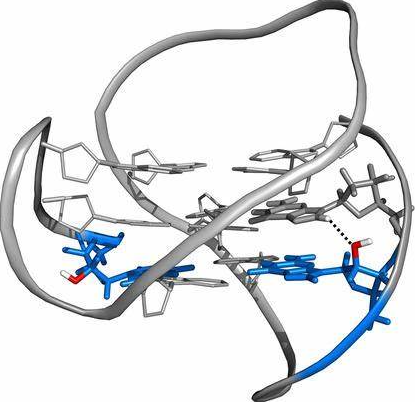Key features and details | |
Cat. No. | MABL-1414 |
Name | Anti-DNA-RNA hybrid mAbs |
Clone No. | AFD- S9.6 |
From | Recombinant Antibody |
Isotype | Engineer antibody |
Application | ABA, CHIP, ChIP-seq, DB, EMSA, FISH, ICC, IP, PLA, SPR, IF |
Species Reactivity | Species independent |
Basic Information | |
Specificity | This antibody demonstrates high specificity and affinity for DNA/RNA hybrids and other A-form nucleic acid hybrids, making it an effective tool for detecting R-loops. It does not cross-react with single- stranded DNA, double-stranded DNA, RNA, or ribosomal RNA. In the original study by Boguslawski et al. (1986), the antibody was shown to bind DNA–RNA heteropolymers and poly(I)–poly(dC) with equal affinity, though 100-fold higher concentrations of poly(A)–poly(dT) were required for comparable binding. DNA–RNA hybrids naturally occur in eukaryotic cells, particularly at sites of high transcriptional activity. These non- canonical nucleic acid structures have transcriptional regulatory functions and are associated with genomic instability. The presence of DNA–RNA hybrids can predispose specific loci to chromosomal breakage. |
Alternative Name | DNA:RNA Duplex; DNA-RNA Duplex; DNA/RNA Duplex; DNA-RNA Hybrid; DNA/RNA Hybrid; DNA:RNA Hybrid; RNA-DNA Duplex; RNA/DNA Duplex; RNA:DNA Duplex; RNA-DNA Hybrid; RNA/DNA Hybrid; RNA:DNA Hybrid |
UniProt | |
Immunogen | This antibody was generated in BALB/c mouse against S9.6 ΦX174 bacteriophage-derived synthetic DNA/RNA antigen according to the protocol by Boguslawski et al. (J. Immunol Methods. 1986). |
Application Notes | DNA–RNA hybrids naturally occur in eukaryotic cells, with their levels increasing in regions of high transcriptional activity, such as during transcription initiation, repression, and elongation. These hybrids play a crucial role in influencing genomic instability, making the anti-DNA–RNA hybrid (S9.6) antibody an invaluable tool for studying R-loops and hybrid-induced lesions during DNA replication and other cellular processes. This antibody also excels in recognizing RNA–DNA hybridization in microarray studies. Key applications of the S9.6 antibody include affinity binding assays (ABA), chromatin immunoprecipitation (ChIP), chromatin immunoprecipitation-sequencing (ChIP-seq), dot blot (DB), fluorescent in situ hybridization (FISH), electrophoretic mobility shift assays (EMSA), surface plasmon resonance (SPR), immunofluorescence (IF), immunocytochemistry (ICC), and immunoprecipitation (IP). |
Antibody First Published | Boguslawski et al. Characterization of monoclonal antibody to DNA.RNA and its application to immunodetection of hybrids. J Immunol Methods. 1986 May 1;89(1):123-30. PMID:2422282 |
Note on publication | The original publication describes the generation of this antibody, its characterization, and its application to the immunodetection of DNA-RNA heteropolymer hybrids. |
COA Information (For reference only, actual COA shall prevail) | |
Size | 100 μg Purified antibody. |
Concentration | 1 mg/ml. |
Purification | Protein A affinity purified |
Buffer | PBS with 0.02% Proclin 300. |
Concentration | 1 mg/ml. |
Storage Recommendation | Store at 4⁰C for up to 3 months. For longer storage, aliquot and store at - 20⁰C. |



